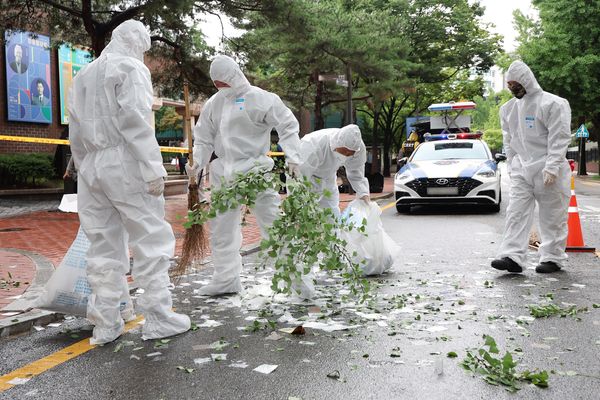
Rare Anglo-Saxon treasures from the British Museum are “returning home” to the north-east of England to help tell the story of a royal court in Northumbria’s golden age.
The objects include one of the finest examples of Anglo-Saxon glass ever found in England and a replica of one of the superstars of Northumbrian artistry, the Franks Casket.
There are also important loans from Shakespeare Birthplace Trust, all going to an ambitious heritage venture in north Northumberland that hopes to be the “Sutton Hoo of the north”.
The Ad Gefrin tourist attraction in Wooler is due to open this February. It is named after what was one of the 20th century’s most remarkable archaeological finds, which was made in the 1950s by a team led by the archaeologist Brian Hope-Taylor.
They uncovered a site at Yeavering that included a complex of timber halls, featuring a vast great hall and a unique wooden grandstand, which formed the royal summer palace of seventh-century Northumbrian kings and queens.

Ad Gefrin will be a visitor centre and museum that offers an immersive experience of the royal court in that era. There will also be objects including the newly announced loans.
Dr Chris Ferguson, Ad Gefrin’s director of visitor experience, said it was exciting to be able to bring back artefacts that would have been used and seen at the Northumbrian royal court.
“A lot of people would never have the chance to go down to London to see these objects. By bringing them here they can have a much broader reach and impact. There is something really lovely to be able to put these objects back into their context,” he said.
One of the stars is a large greenish-coloured drinking glass known as the Castle Eden Claw Beaker. It has striking blue and clear claw decorations, and was discovered in County Durham in the 18th century. It was acquired by the British Museum in 1947.
“It is a beautiful thing,” said Ferguson. “It is remarkable because it’s intact. It is the type of object that’s associated with people of high status and would have been used at great halls like Yeavering and would have been in burials like Sutton Hoo.”
When people talk about Northumbria’s golden age they are likely to name three standout treasures: the Lindisfarne Gospels, which are this month temporarily coming “home” to Newcastle’s Laing art gallery from the British Library; the Ruthwell Cross; and the Franks Casket, a densely decorated chest made from whale-bone.
Ad Gefrin is borrowing “a really brilliant” replica of the casket from the British Museum, said Ferguson.
“On the casket are various biblical scenes, Anglo-Saxon myths and runic inscription. It is a complex object. It shows you what a high-status craftsman of Northumbria was able to produce and they were exported around Europe … it is the soft power of Northumbria in the seventh century.”

Also being borrowed from the British Museum are pendants and a seventh-century silver penannular brooch that was found in Wooler in the 1920s.
Shakespeare Birthplace Trust in Stratford-upon-Avon is also responsible for a collection of locally found Anglo-Saxon objects and is lending objects including a shield boss and a “great square headed brooch”, which the trust’s curator Rosalyn Sklar said was “perhaps unique among Anglo-Saxon finds”.
She added: “These collections are of national importance and are rarely seen by the public, which makes the collaboration with Ad Gefrin so important.”
Ad Gefrin aims to tell a story that will surprise some, Ferguson said. It was a time when women could own property and were equal in the eyes of the law, he said, diversity was embraced and there was an expectation that new friends would give and not take away.
Ferguson said the support for the Ad Gefrin venture was heartening: “It has been lovely, people have been incredibly supportive. I think it is because we are telling a story that is waiting to be told and we are doing it sensitively and thoughtfully.”






